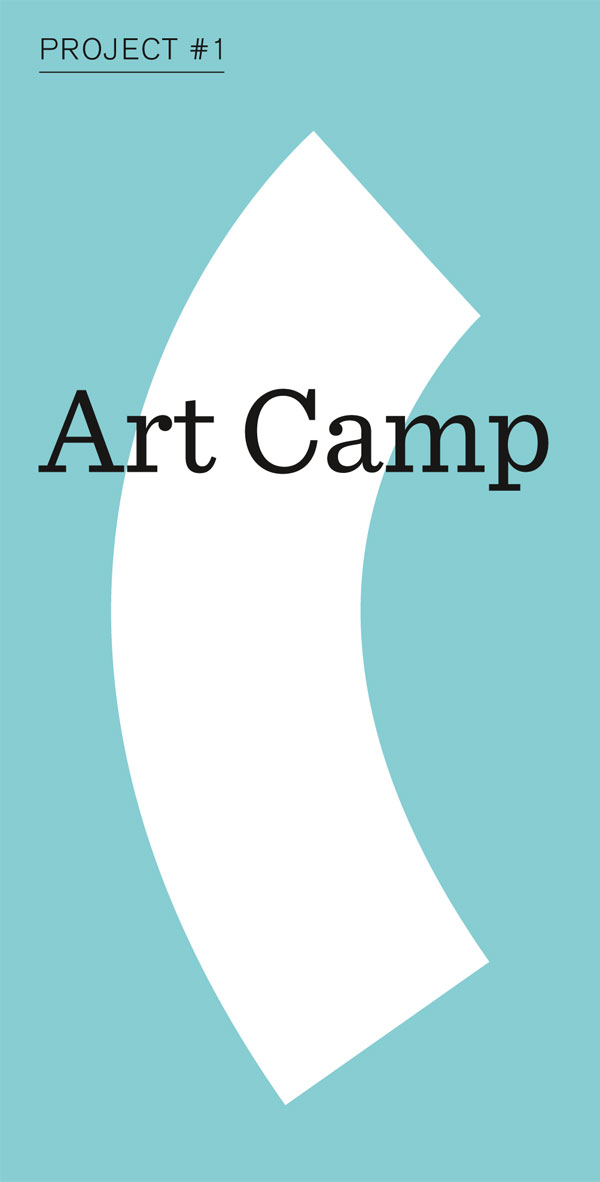
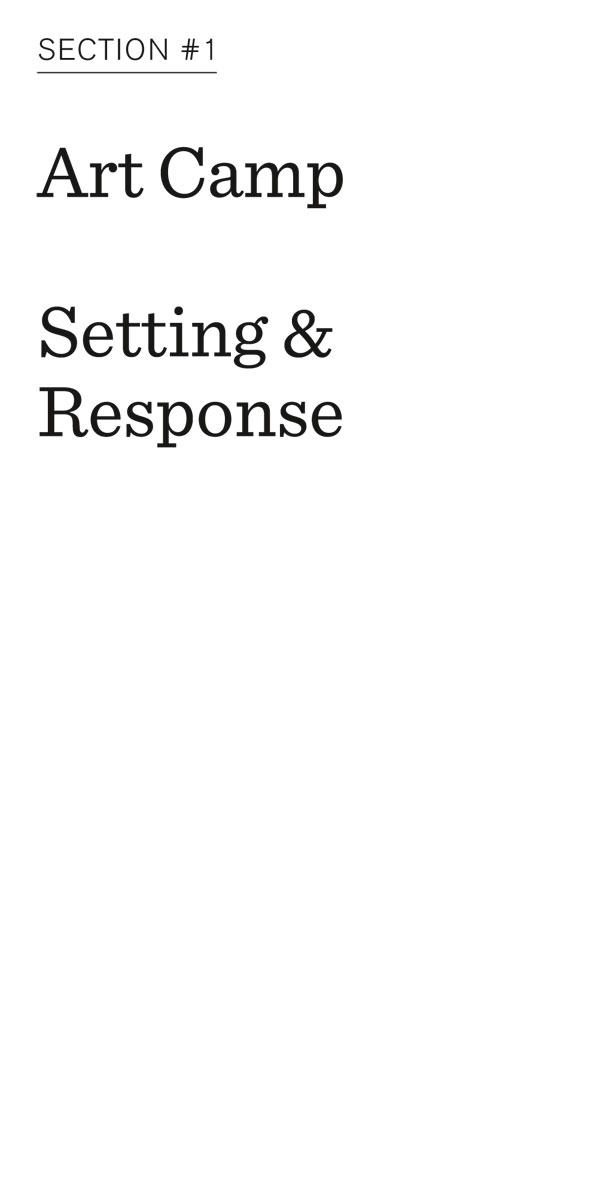
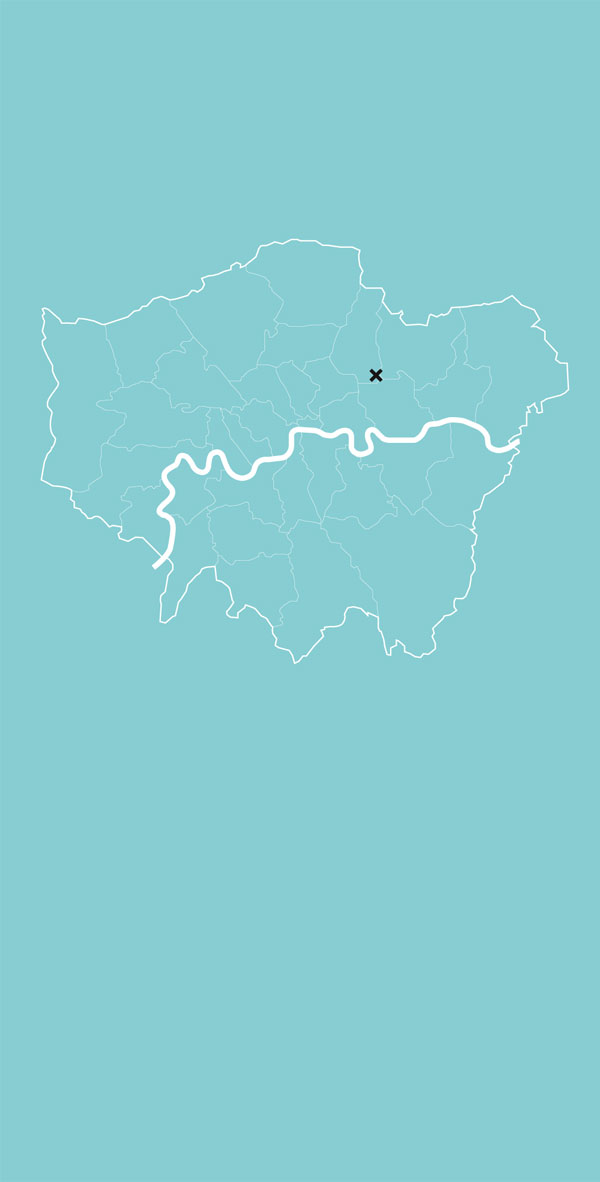
Art Camp is an action research project to determine what it takes to make a non-task orientated creative environment shared by children and artists where artists can make critically reflective art.
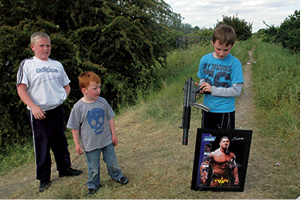
fig. 1 – Prototyping uncertainty
The principle of Art Camp is the process of Prototyping Uncertainty, the struggle to leave room for doubt, both in the process, the methodology and in the outcome of made forms.
Doubt is essential to counter the myth of certainty, which is the default mode of the architectural plan. From the altitude of the plan, just as in the compelling distance of the elevated scenic view, there is the comforting illusion of comprehension, the city laid out and seemingly rational; a place for tall buildings, an organising grid, pockets of green, it is only in the messy close looking at ground level that life is revealed and experienced as an aggregate of multiple, received and sometimes conflicting ambitions and inner desires.
Doubt is the space where identities can be questioned and remade rather than simply received.
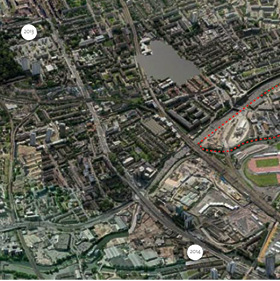
fig. 2 – Aerial view of Hackney Wick Fish Island
showing Art Camp sites by year aerial view of Hackney Wick Fish Island
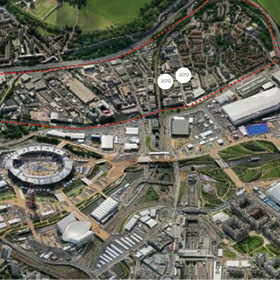
Art Camp began as a reaction to the foreseeable impact on Hackney and Wick Fish Island as a result of the heat of the post 2012 Olympic development, namely, what happens when there are no more under-determined, post industrial or other slack spaces left for either children or artists to appropriate? 1
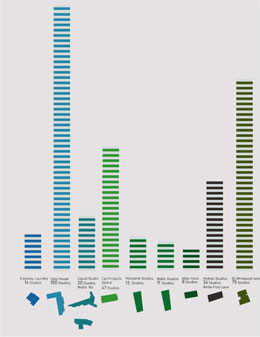
fig. 3 – Analysis of studio space in HWFI 2009
Research parameters were refined through a dinner debate: We are artists, how can we help devised by muf in 2011. Bringing together 30 artists, policy makers, developers and businesses, the role of the creative sector and creative practice in ‘home growing’ the future HWFI in the face of the adjacent Olympic development was contested.
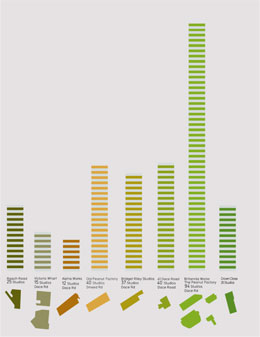
The debate established divergent aspirations, on one hand the potential for artists to resist co-option and establish an alternative economic and critically meaningful development scenario and conversely the ambition for artists to be prioritised within the development process to home grow
To listen to the Dinner Debates click here
Art Camp emerged somewhere between these two positions, conceived as
In 2009
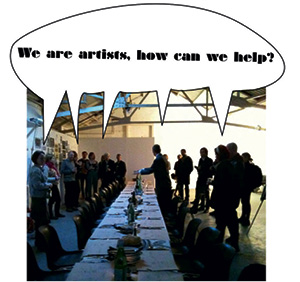
fig. 4 – ‘We Are Artists, How Can We Help’ hosted by Design for London, chaired by Simon Grennan

fig. 5 – Invitation to the Dinner Debate
Development Company, to work in HWFI over a five-year period to deliver a raft of strategic studies, plans and urban realm improvement projects. The three initial studies: Creative Potential, value what is there 2; Adding Value, The role of public space, open space and space for culture in Hackney Wick / Fish Island 3, and The Exception is the Norm, HW + FI Design Code 4 informed the Neighbourhood Improvement Plan, which, through proactive engagement with local people,
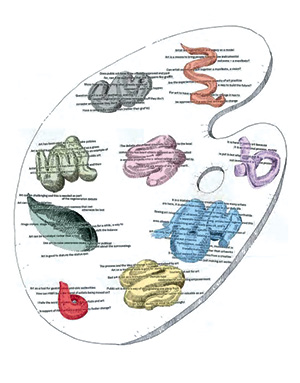
fig. 6 – The brief as a summary of what was said
identified 29 urban realm improvement projects, 9 of which were delivered through strategies for local suppliers and makers to deliver capital works, through an initiative called Made In 5.
In parallel with the delivery of the urban realm projects, and as a separate commission with London Thames Gateway Development Corporation (LTGDC) as the client, muf established a public art strategy and made 7 temporary and 3 permanent art commissions.
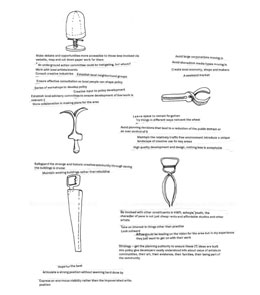
fig. 7 – Tools for change
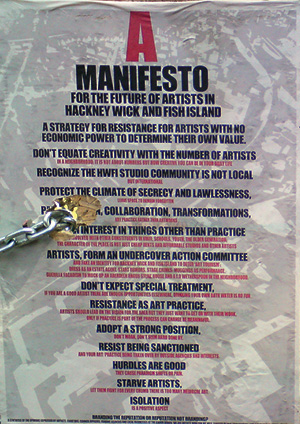
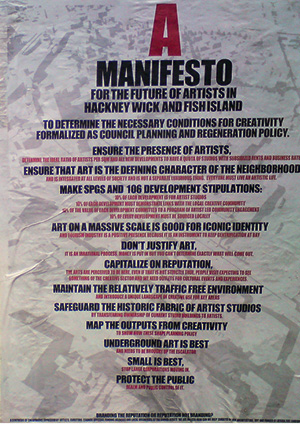
fig. 8 – Dinner Debate Manifesto
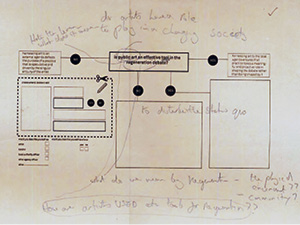
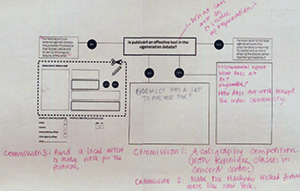
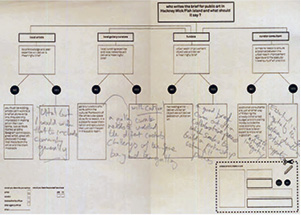
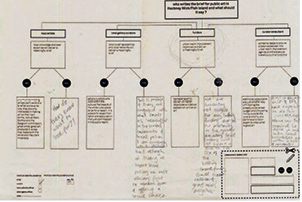
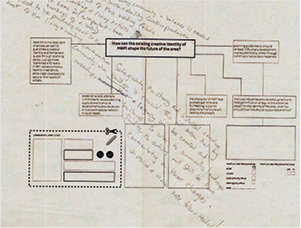
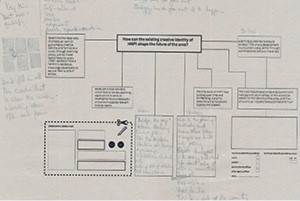
fig. 9 – Dinner mats as flow charts
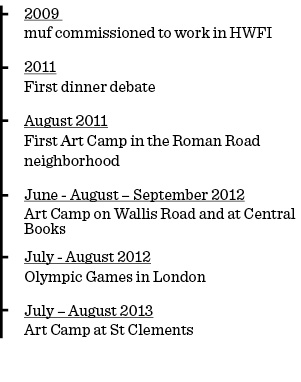
fig. 10 – Timeline
1 For more information on muf's interventions at HWFI click here.
2 To read the Creative Potential: Hackney Wick/Fish Island publication click here.
3 To read the Adding Value publication click here.
4 To read the Exception is the Norm publication click here.
5 For a full report on the design and planning guidance for HWFI, including the Made In research, click here.
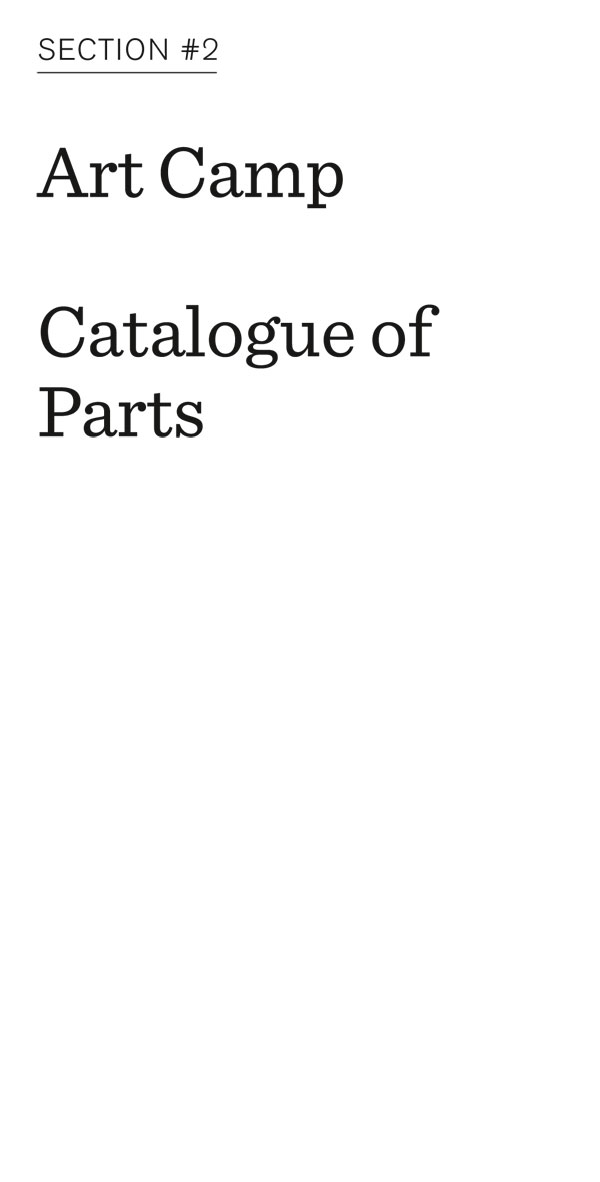
When a building or site is blighted by development potential it may stand empty for years, a period of time equal to an entire childhood.
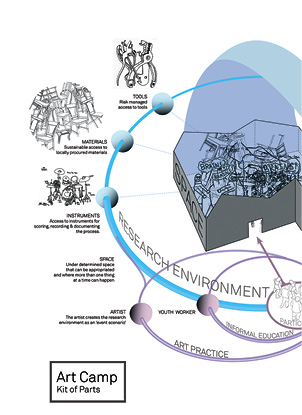
Art Camp is founded on a belief in use predicting use, where the temporary camp and its activities act a marker for future development.
The belief in use predicting use, of occupation as a kind of ownership, is

fig. 11 – Kit of parts
blithely delusional when the use in question – exploring nascent creativity – has no market value; it is inevitable that the temporary appropriation of sites in this way will have minimal impact on subsequent development. The experience of appropriation for the user is significant, however, and lives on, carried in the children’s memory as a template of possibilities, even after that actual place, with all its potential, is then lost to the city.
In this way Art Camp is a memento mori.
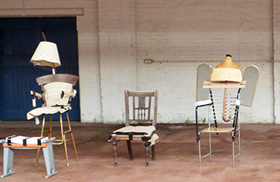
The first Art Camp was located on an empty site in the Roman Road neighbour-hood adjacent to the A12 opposite Fish Island. muf identified the site in the urban realm master plan and proposed a pre-development use as a play park and site for green composting. The local housing asso-ciation owners dismissed the proposal as their development was imminent but gave permission for a month-long occupation by Art Camp.
Five years after that initial Art Camp the development is still 'imminent' while the site remains derelict and unused.
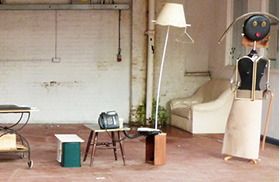
fig. 12 – Scene from Art Camp 2012
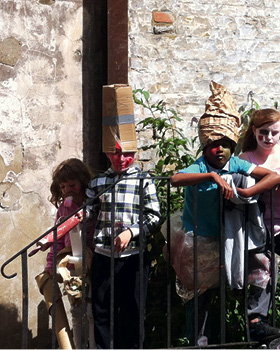
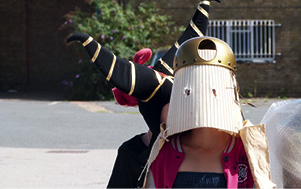
figs. 13–14 – Scenes from Art Camp 2012
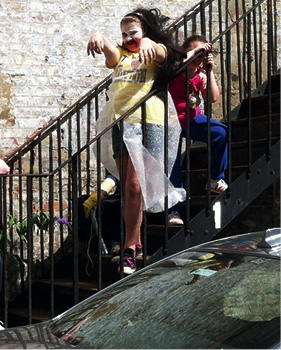
Event Scenario
A manifesto nailed to the gate, a portacabin, a handcart and a map of the neighbourhood. The camp began with a journey wheeling the handcart through Hackney Wick and Fish Island from business to business to collect their useful waste. These salvaged materials were taken back to the site for ad-hoc constructions. As well as muf and Mary George, the furniture designer Martino Gamper and artist Verity Keefe delivered Art Camp experiences. Martino assisted the children in the design and making of furniture, and Verity brought her mobile cinema.
The findings
1. Co-authoring in a child led environment is complex, challenging and requires continuity, commitment, space and time for reflection
2. Enabling creativity is not making art
3. The impact of appropriation and scavenging materials for making from business and studios in HW and FI had as profound an impact on Martin, the youth worker as on the children
4. One to one conversations between the child and artist were as valuable as one to one making
5. The portacabin was totally inadequate as a creative space
6. Space for large scale making to evolve over the duration of the project was essential
7. Attendance was voluntary and unpredictable
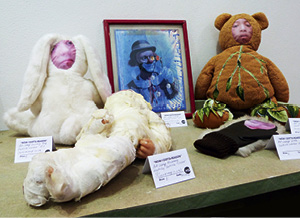
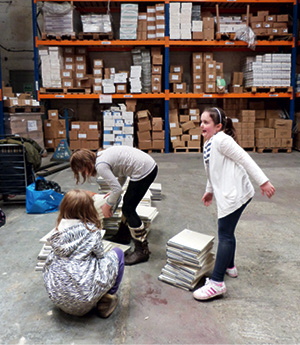
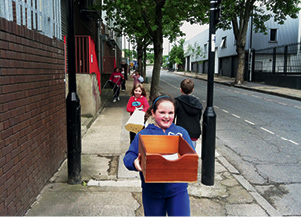
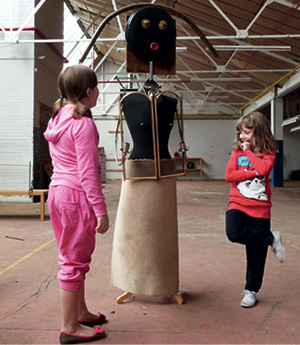
figs. 15–18 – Scenes from Art Camp 2012
The second Art Camp was delivered on two sites, an empty warehouse on Wallis Road now demolished to create development plots and a new route to the station, and Central Books, then operating as a book distribution warehouse, now earmarked for residential development.
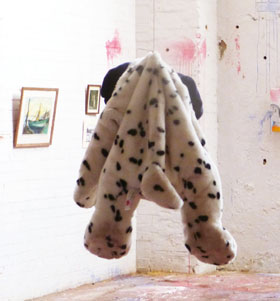
The art campers were children from Eastside Youth club, some of who came the preceding year.
The camp coincided with the HW&FI Open Studios as part of Open House where Art Camp had a presence and later in the year Art Camp artefacts were part of Grizedale Arts Now I Gotta Reason to Shop exhibition at the Jerwood Space on Union Street.
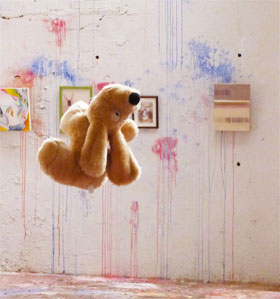
fig. 19 – Scenes from Art Camp 2011
Event Scenario
How to begin’ is where the event scenario took shape, taking the children to a place rich in possibilities and standing back, coming forward, standing back, constructing a context and then reflecting on that context. Splatter House was run by
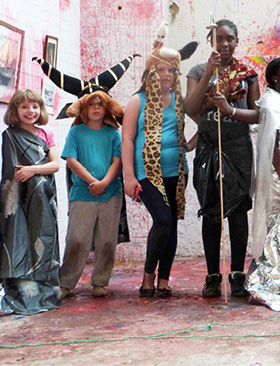
muf with Andreas Land and Aldworth, James and Bond. The first rule of Splatter House was to take things apart, including preconcep-tions, and the second rule was to put things back in your own way, inspired by visit to galleries and other artists. The children scavenged the streets and local businesses of Hackney Wick
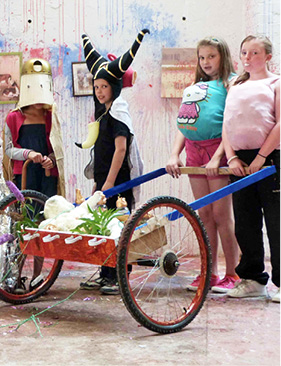
fig. 20 – Scene from Art Camp 2012
and Old Ford for their found materials. In Foodo Café, run by Mary George, the process began with a musical jam using amplified toys to create horror-fuelled sound tracks, and ended with reflecting on things that are scary in everyday life. In Verity Keefe’s Book Breaking Club 10,000 books earmarked for pulping were made
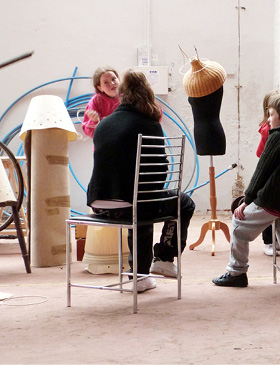
into huge three dimensional fanzines. The aim of the collaborative process was to make co-authored work. 10,000 books earmarked for pulping were made into a huge fanzine made from selected pages.
View Art Camp 2012 Film here.
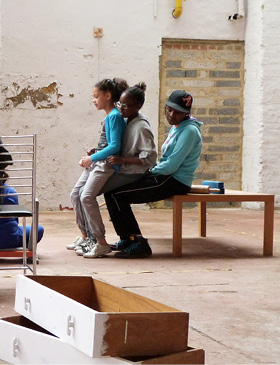
fig. 21 – Scene from Art Camp 2012
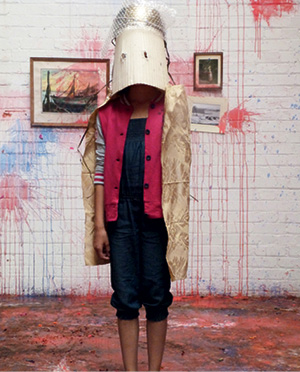
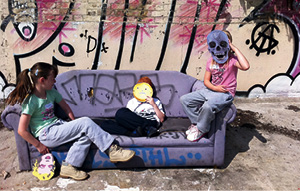
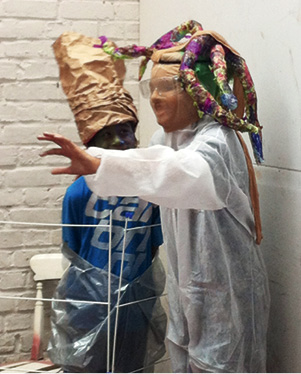
figs. 22–24 – Scenes from Art Camp 2012
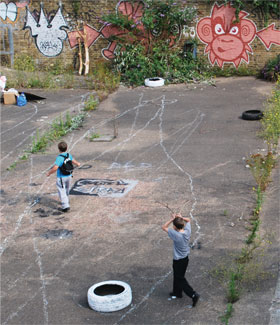
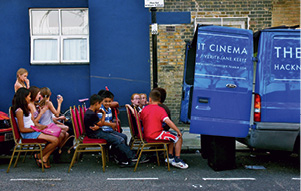
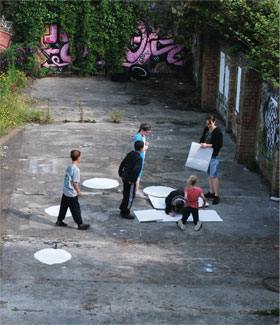
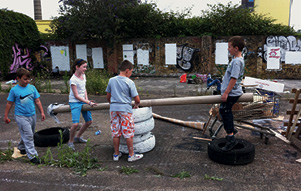
figs. 25–27 – Scenes from Art Camp 2012
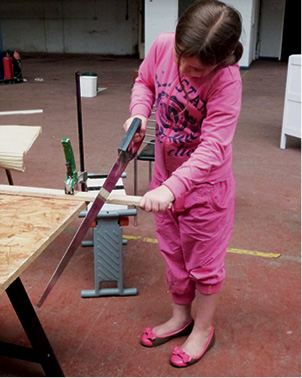
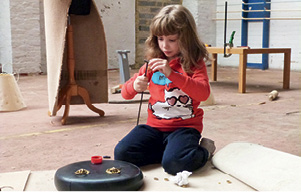
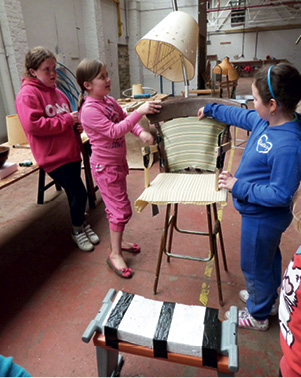
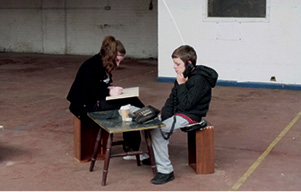
figs. 28–31 – Scenes from Art Camp 2012
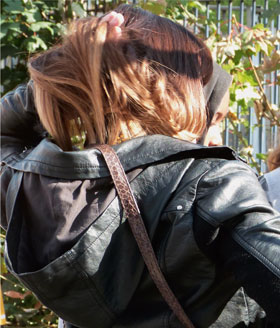
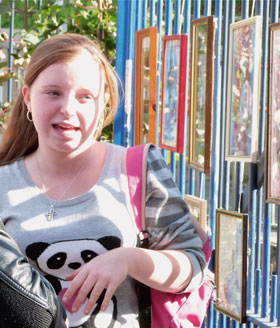
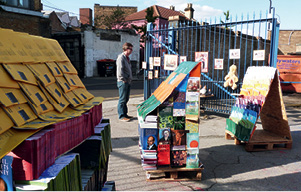
figs. 32 – 33 – Scenes from Art Camp 2012
Art Camp 2013 base camp was St Clements, a disused psychiatric hospital in Mile End.
The hospital, a local landmark, had been empty and derelict for 15 years and was earmarked for commercial residential
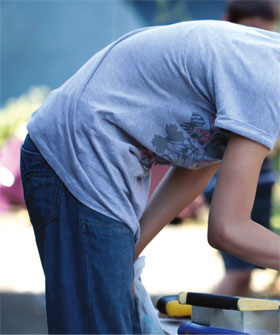
development, with a small part given over to the first London Community Land Trust. The Shuffle film festival was delivered in parallel with Art Camp 17.
The brief was refined by a second Dinner Debate where the concept of open ended scenarios as ‘objects of affordance principle of prototyping uncertainty was
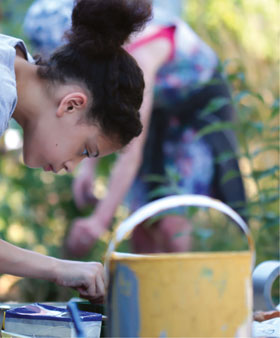
fig. 34 – Scene from Art Camp 2013
mooted. These ideas were further explored during 3 week-long sessions, led by muf with commissioned artists Juliet Haysom, Tom Woolner, and Bahbak Hashemi-Nezhad.
The Art Campers in 2013 were children from Eastside youth club and from Play Association Tower Hamlets aged between
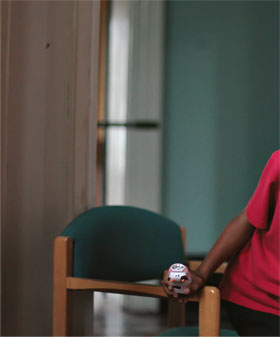
8 and 13 years old, and slightly older children and young people on the autistic spectrum from Phoenix School, which is almost opposite the derelict hospital.
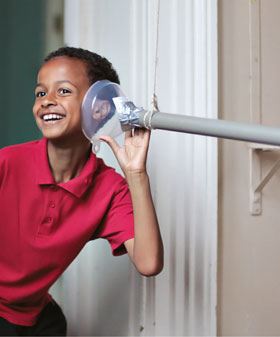
fig. 35 – Scene from Art Camp 2013
Event Scenario
Each artist created a specific event scenario: Tom was based in the disused hospi-tal theatre and social club and made a rich process based offer of making in the form of a jam session, all framed by the proscenium arch of the actual stage and

which culminated in an ad hoc promenade performance; Bahbak was based in the hospital gardens and delivered experiments in auto-documentation and adapted genres of play, dark hide and seek, as art production; Juliet delivered a drawing workshop in the ruined church opposite the hospital and muf was

fig. 36 – Scene from Art Camp 2013
based in the derelict hospital offices and the garden and constructed a series of tableaus appropriated as film sets by the children.
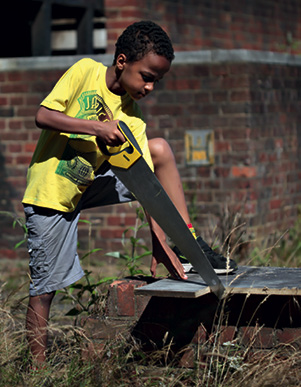
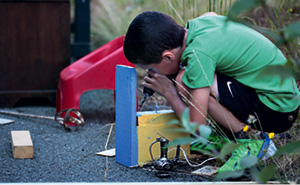
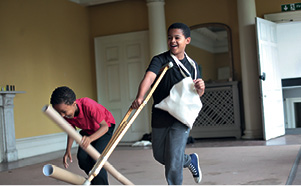
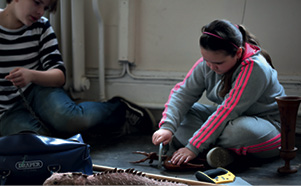
figs. 37–40 – Scenes from Art Camp 2013
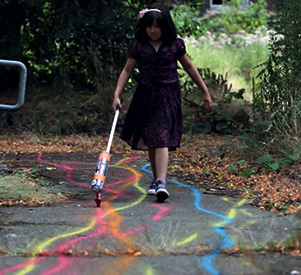
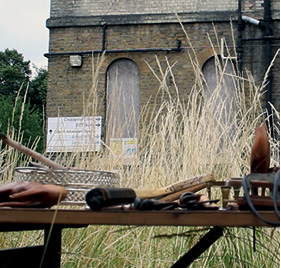
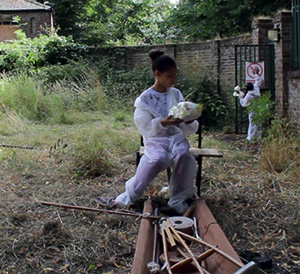
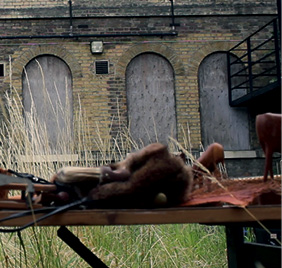
figs. 41–43 – Scenes from Art Camp 2013
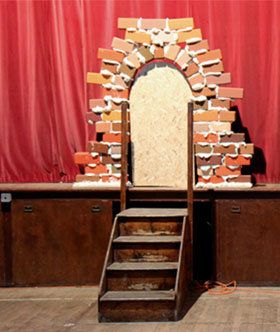
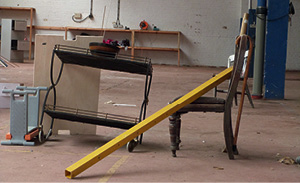
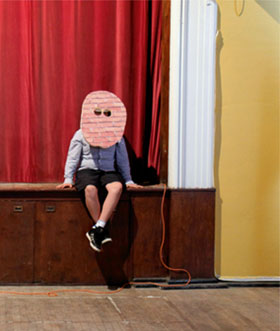
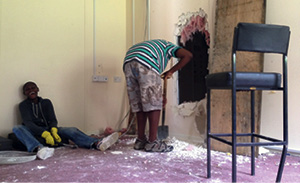
figs. 44–46 – Scenes from Art Camp 2013
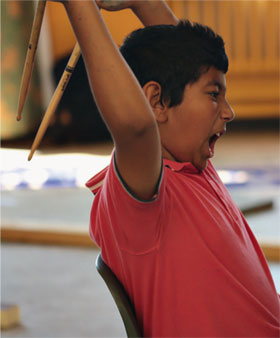
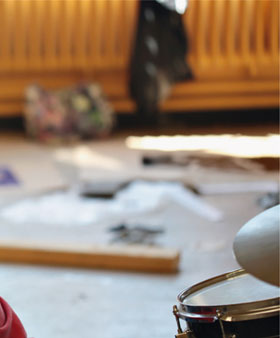
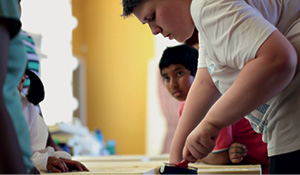
figs. 47–48 – Scenes from Art Camp 2013
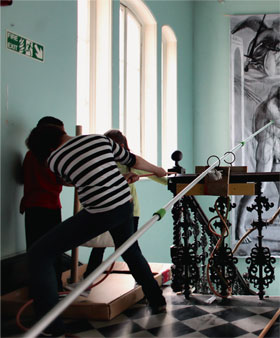
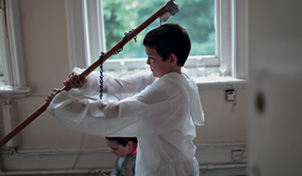
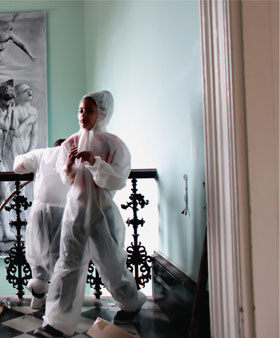
figs. 49–50 – Scenes from Art Camp 2013
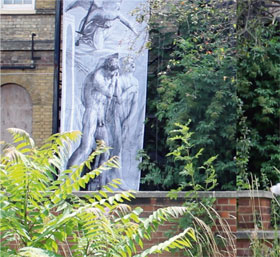
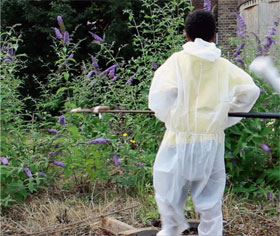
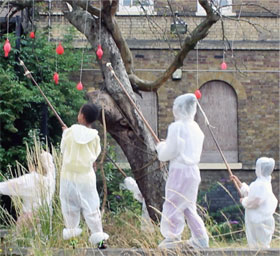
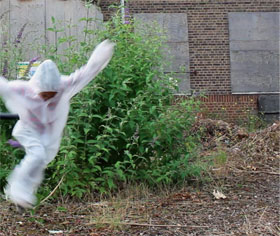
figs. 51–52 – Scenes from Art Camp 2013
Art Camp 2014 was delivered with the support of Bow Arts Trust in the warehouse complex that also hosted the East London Painting prize.
Event Scenario
The concept of prototyping uncertainty was materialized through representations of pictorial space mapped onto a real space
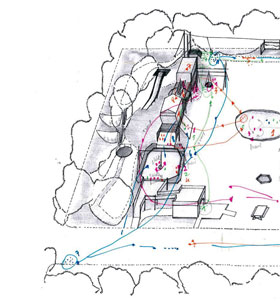
delivered as a 2-hour experience with a follow-up exhibition at the adventure playground and observational research.
The ‘event scenario’ was constructed as an overtly theatrical platform for the performance of the children, dressed in white boiler suits as conscious performers, first as gallery visitors and then as ‘artists in residence’, against a backdrop of depictions of early Renaissance painterly space, with the visitors to the East London Painting Prize as the audience.
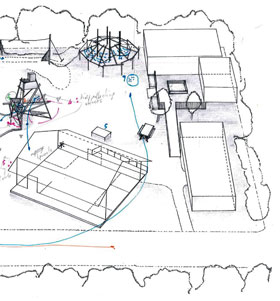
fig. 53 – Art Camp 2014

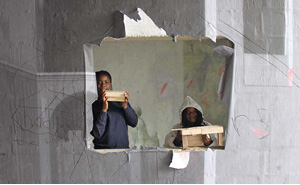
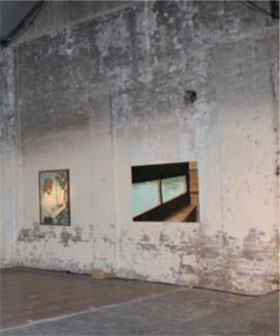
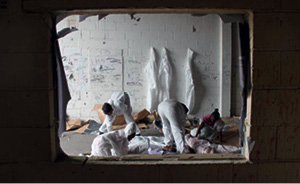
figs. 54–56 – Scenes from Art Camp 2014
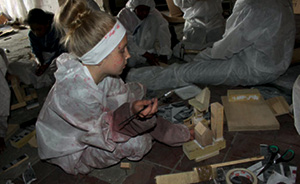
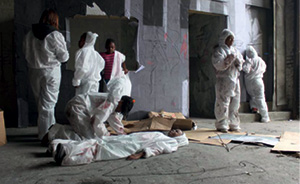
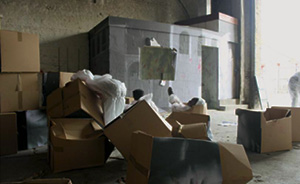
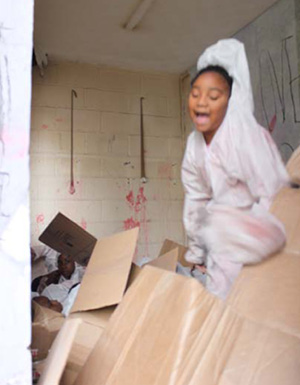
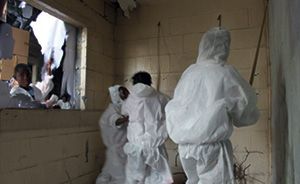
figs. 57–58– Scenes from Art Camp 2014
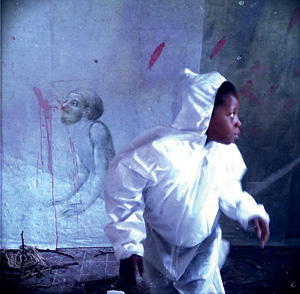
fig. 59 – Scene from Art Camp 2014
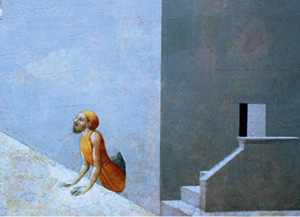
fig. 60 – Backdrop used in Art Camp 2014
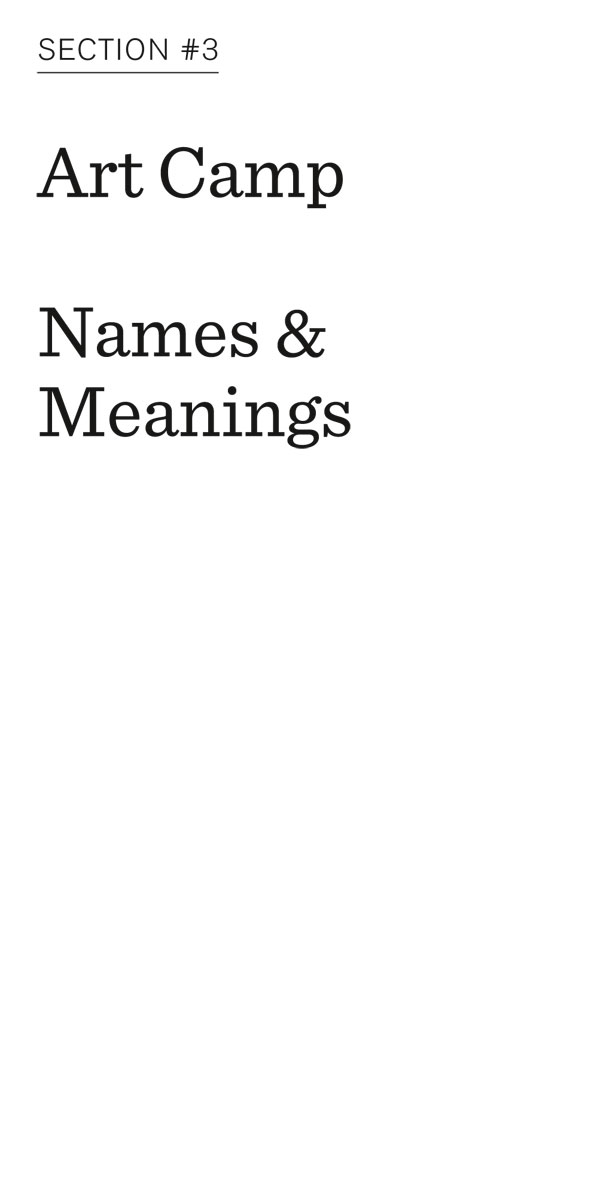
Art makes a space for us to respond to things that are outside everyday conventi-ons. The play of children exists in a similar parallel territory, as observed by Tim Gill 1, a leading thinker on childhood: ‘When children are playing freely, rules, conventions, structures, codes of behaviour are all up for grabs in the pursuit of novelty and stimulation. It is not that these pro-cesses are ignored, abandoned or destroyed – that would be true chaos. Rather, there needs to be a degree of uncertainty and unpredictability about their application in order for play to flourish.’
Art Camp operated from derelict post-industrial and other spaces. At the time that we inhabited them, these were all spaces that had wholly or partially lost their mean-ing through the loss of their original use. The value of a place that has lost its mean-ing is that it is incomplete and open to in-terpretation, there is room for speculation and uncertainty. This loss of meaning, as much as the collapse of the fabric of a building, is what makes a ruin, and a ruin exists between a now that will cease to exist
and the future which will be different.
These kinds of spaces are open to interpretation and appropriation, places of uncertainty that make us come to our own, often-precarious relation to place, places where meanings are made rather than received.
The naming of Art Camp was initially ironic, a kind of boot camp for art that would be uncompromising and ‘correctional’, a place to consciously examine the relationship between child and artist, between art, play and creativity as the conditions where propositions can emerge. It was to be a place to resist the indulgence that art, like play is only always fun, rather than complex, exposing and hard to do; a place to resist a child’s (and an artist’s) relationship to art as an unreflective product that comes from a brief and a set task.
Open Air Art School was conceived as an alternative to the typical scenario of ‘artist delivers workshop to child’. Instead, the aim was for the artist to create the conditions to instil a habit of appropriation, and to encourage in the children a capacity to identify and make the most of scarce and overlooked resources.
For Art Camp to be a site of genuine,
speculative exploration for the child and the artist, it has to be an open-ended situation without the constraints of ‘doing art’ on either the artist’s terms or to meet the expectations of the children (or client). The artist outside the art gallery operates as the specialist in a non-specialist environment and has to address the pull of autonomy (their ambition to make an ‘art work’) and the give and take of engagement.
The child operates as a child.
In play children describe and negotiate the rules of a game to and with one another, the artist must decide how much and how to describe their intentions, while perhaps not knowing – at that point – what their intentions will be. For the child play has no outcome, but for the artist, practice has an outcome. This is not so much explaining, ‘what I am doing’, but rather ‘how I am going to post rationalise this as an art work.’
During the life of Art Camp, this issue of disclosure – the social sculpting of the situation and the inherent imbalance of conscious authorship, remained in flux and was addressed through an on-going dialogue with the children to share as
freely as possible the outcomes for the artist. This relationship between the artist and the child, between art and play, was described as co-authoring where, with degrees of give and take, each was the material for the other.
The first ‘give’ was that of the artist making an initial ‘event scenario’ as the open-ended introduction to the site. The aim of the ‘event scenario’ was to avoid a prescriptive task and instead make an invitation. The ‘event scenarios’ took different forms, for example one form was to dress the site with ‘loose parts’: props, materials, tools and skills, in a way where the parts could be re-assembled and the skills (as adults) brought into play.
The event scenario as a concept emerged in the second year of Art Camp as a way to describe a non-task orientated situation, if there is no ‘making task’ there is still a need to ‘begin’. This ‘how to begin’ started to gel as the process of taking the children to a place rich in possibilities and standing back, coming forward, standing back, constructing a context and then reflecting on that context, this process was not a delivery model but an iterative relationship and shared occupation and investigation of a fragile social,
cultural and typological niche.
For example, a decision was made to programme Art Camp 2012 with the on-site experiences being interspaced with conversations back at the youth club and concluding with opportunities for consolidating and exhibiting the process. In addition to this extended relationship with the children, we also formalised a relationship with undergraduate youth workers who shadowed the project as work placements, organised through local resident and university lecturer, Tracie Trimmer 2.
The iterative process can be seen in the timeline for Splatter House where the children’s reaction to the first scenario either was either observed or discussed with them and this then shaped the next invitation. Here, the children were given a map to find the route from the youth club to the warehouse Art Camp site and lead the way. Along the route were placed piles of discarded furniture, some of the children remember the previous year and begin to collect the furniture.
Andreas Lang draws up in Wick on Wheels, his converted milk float and offers the children a lift, this enables them to collect more ‘rubbish’.
This open-ended process means that the artist has to accept unexpected outcomes, including things being destroyed and ignored, as well as things being made. The outcome of this open-ended process was not necessarily artifacts, but was the intangible but seminal and lasting impact of the experience, the memento mori.
However the funding client, though supportive, wanted Art Camp to be a model that could be scaled up and replicated (or monetised). The client wanted muf to deliver a service model, through commissioned artists, rather than to operate ourselves as artists. This tension between Art Camp as a product and Art Camp as critical practice led to a series of mistakes. These failures, though time consuming, were clarifying.
Our first failure was our collective inability to articulate and then to adequately defend the experimental process as the driver of the artist-authored outcome. Although much lip service is paid to the value of open-ended artists’ briefs, both clients and artists collude in premature outcomes driven by the limits of fee, time and the security of an artwork product. If the pre-development sites were
spaces of uncertainty, where meaning was made rather than received then the process had to also engage with this degree of uncertainty. The client and the youth workers’ response to uncertainty, however, was to push towards simplification, which was an approach that arrived too early at an Art Camp formula. Their tendency was to advise the child what was and what was not art, and to celebrate and value the child’s creativity in the form of technical skills above critical decision-making. They downplayed the shifting relationship between the artist and the child, where each is the ‘material’ for the other.
As part of the inaugural process the client suggested the children should participate in the selection process of the artists, and that the children demonstrate their commitment by bringing an artwork of their own making to the initial meeting. Although asked to do so, none complied by bringing an artwork. However, this engendered an expectation that Art Camp would be an environment where things recognisable as art would be made and consequently activities that fell outside the conventions of drawing or painting or sculpture were initially viewed with suspicion.
In terms of the selection this proved a terrible decision. Children like what they know, it is only in rarefied moments of play that children experiment with new ways of doing things and take the familiar and change it in some way – this was the point of the project, to make space for those rarefied moments, but somehow we forgot, and our responsibility to provide an experimental environment was turned into a gimmick.
Art Camp was always conceived as action research, a process-generated outcome that shares many similarities to that of loose parts play environments. Art Camp diverges from a play environment in that the artist is also in a position to post-rationalise and reflect back to the children, not just on the creative process, but on also how this becomes art through critical framing. For that reflection to be effective an extended dialogue with the children over a sustained period is necessary.
by Katherine Clarke
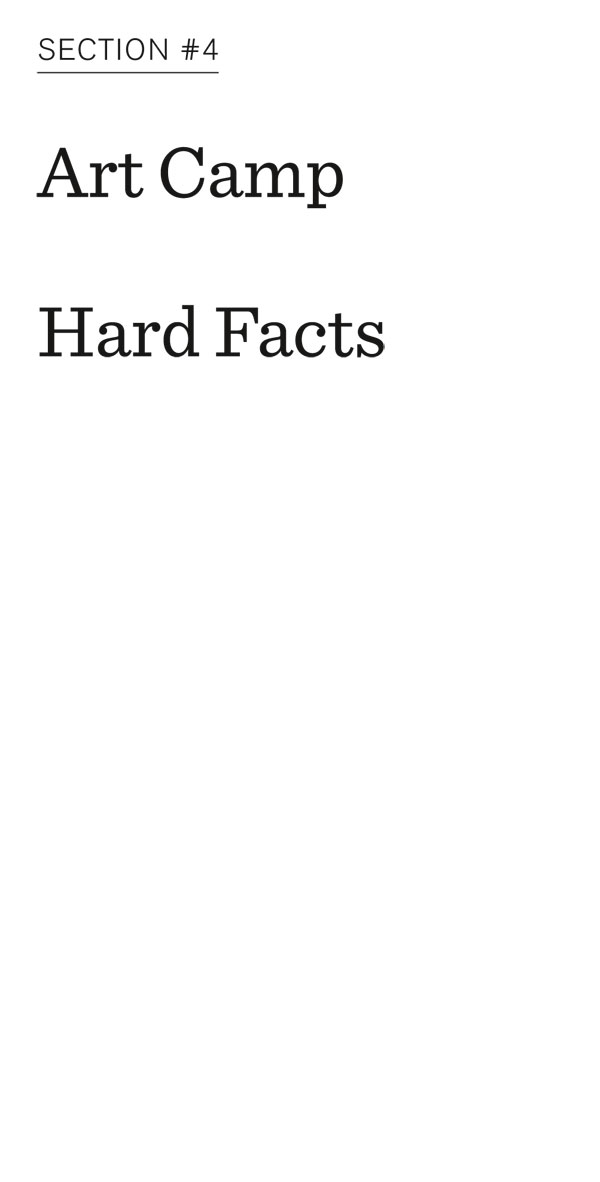
Art Camp 2011
Address/location: corner of Wendon Street and Old Ford Road, E3
Art campers: children from Eastside Youth club
Funders: DfL
Curators: muf and Vicky Lewis
Artists: muf, Mary George, Verity Keefe, Martino Gamper, Russell Thoburn, Martin King (youth worker)
Art Camp 2012
Address/location: Central Books, 99 Wallis Road, London, E9 5LN; Wallis Road, Hackney Wick, London E9 5LH
Art campers: children from Eastside Youth club, some of whom came the year before
Funders: LLDC
Curators: muf and Vicky Lewis
Artists: muf, Mary George, Verity Keefe, Andreas Lang, assisted by youth workers
Art Camp 2013
Address/location: St Clement’s Hospital, Mile End Road, London E3 4LH
Art campers: children from Eastside Youth club, Phoenix School and Play Association Tower Hamlets
Funders: LLDC
Curators: muf
Artists: muf, Juliet Haysom, Tom Woolner, Bahbak Hashemi-Nezhad
Art Camp 2014
Address/location: Bow Arts, 183 Bow Road, London E3 2SJ
Art campers: children from Hackney Play Association
Funders: LLDC
Curators: muf